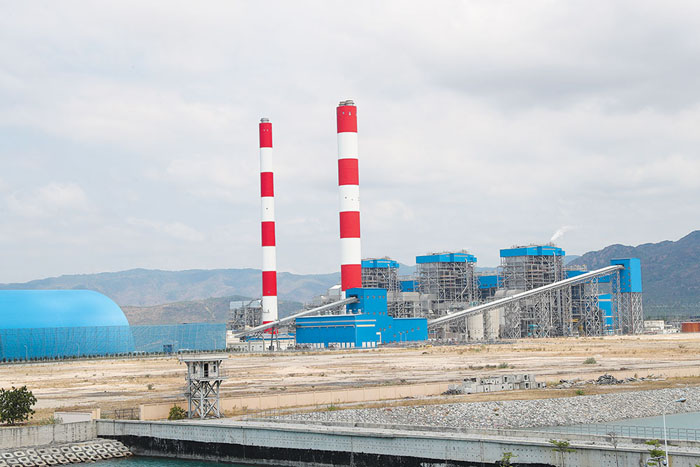A robust development in terms of scale
During the period 2011-2019, nearly 34,200 MW of installed capacity has been put into operation; of which 15,725 MW belongs to EVN, accounting for 46%. EVN has completed and put into operation 1,830 power grid projects ranging from 110 kV to 500 kV.
Over the past time, given incentives and favorable policies issued by the Government, solar power plants and renewable energy sources have been massively developed, leading to local overload in transmission grids in some areas; causing a lot of difficulties in operating the power system safely and stably. Recognizing its responsibilities, EVN has actively accelerated the implementation progress of transmission grid projects, especially those in the Central region. As a result, for the time being, power from renewable energy power plants in Ninh Thuan and Binh Thuan provinces has been fundamentally properly released. At the same time, EVN has made efforts to safely, efficiently and economically operate the power system and the electricity market.

With regards to investment in electrifying rural, mountainous and island areas: Up to now, 100% of communes, 99.52% of households, of which 99.25% of rural households nationwide have access to electricity. EVN has supplied electricity to 11 out of 12 island districts. According to the World Bank, Vietnam has successfully and effectively implemented rural electrification investment projects. In particular, Vietnam's electricity index ranks 27th among 190 countries. At a meeting with EVN in August 2020, Mr. Phung Quoc Hien - Member of the Party Central Committee, Vice Chairman of the National Assembly assessed that the Vietnam's power industry had had a strong development, owning the second largest installed capacity in the Southeast Asia (after Indonesia) and ranking 23rd in the world; leading ASEAN countries in terms of grid infrastructure. Despite facing many difficulties, EVN had accomplished the tasks assigned by the Party and the Government, supplying adequate electricity for socio-economic development and people's life.
Challenges are still ahead
Currently, electricity output generated by all EVN's power plants (including JSCs) accounts for over 50% of the power system's; in particular the electricity output generated by power plants 100% owned by EVN is only 31%. By the year 2025, the proportion of installed capacity owned by EVN and the affiliates where EVN holds dominating shares will be reduced to 36% (of which that of power plants under EVN will represent only nearly 20%). By that time, EVN will play a major role just in the field of power transmission and distribution and be only one of the players participating in the power generation sector. Therefore, ensuring electricity supply security in the future will be beyond EVN's capacity and will depend largely on the contribution and investment progress of power generation projects by investors outside EVN.
Mr. Phung Quoc Hien assessed that the Vietnam power industry was beeing facing many difficulties such as an inconsistent master plan; increasing electricity demand; many power projects invested by other investors than EVN being behind schedule; low electricity tariff, etc. The most important objective in the coming period is to prevent power energy shortage in the country and to supply sufficient electricity for the national economic development as well as people's lives. This is a big challenge, as EVN will have possession of only about 20% of the entire system's installed capacity. In order to well perform the assigned tasks in the years to come, to properly remove difficulties and problems in power project investment and construction, EVN recommends that the National Assembly should amend the Electricity Law, determine the state management role of electricity, especially management and operation of transmission grids, responsibility in ensuring energy security under conditions of socializing development of and investment in the power sector. At the same time, an electricity sector reform law should be developed and promulgated as a basis for forming a competitive retail electricity market; allowing the use of a mechanism where the Government provides loans with concessional interest rates from the Government's investment credit sources, or businesses are entitled to obtain sovereign guarantee for power industry investment and development projects, etc.
Outstanding performance figures of EVN in the implementation of Master Plan No. 7 and the revised Master Plan No. 7 (period 2011-2019):
- Electricity output and import: Increasing by 2.37 times
- Power sales: Increasing by 2.46 times
- Average electricity growth: 10.5% / year.
- Average power sales per capita: Increasing by 2.2 times.
- 15,725 MW of new capacity put into operation, accounting for 46% of the country's total installed capacity.
- Completed 1,830 projects of 110–500 kV grids, with a total length of over 21,900 km, total capacity of substations of 188,820 MVA
- Total investment capital value: reaching VND 916,706 billion.